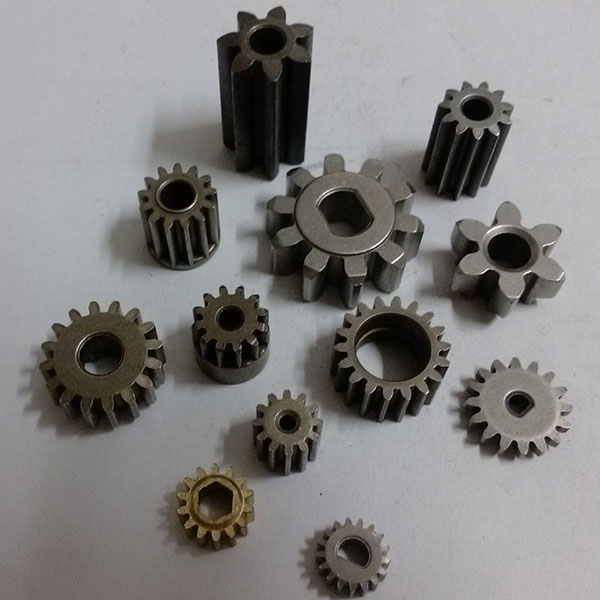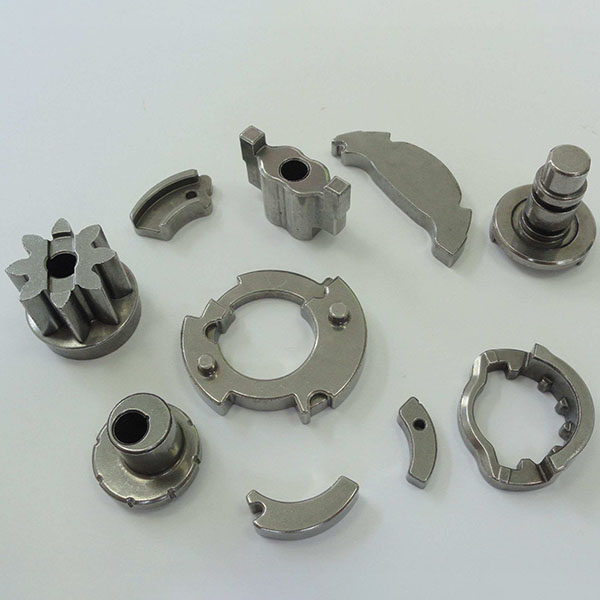Inspiration can strike at any moment, and for Alaska’s outdoor products entrepreneurs, it often comes mid-adventure with the thought, “How can I make this even better?”
It’s not surprising that Alaskans are responsible for innovative outdoor products. After all, Alaska is home to the most active outdoor residents in the country (albeit tied with Montana). According to the Outdoor Foundation, 81% of Alaska residents participate in outdoor activities, compared to a national average of 54%. Iron Gear

A testing ground for cutting-edge outdoor products
Chaney Fray, who cofounded Versa Outfitters a year and a half ago with Erin Thacker, said that the high percentage of recreating Alaskans is one of the reasons the state is a good place to launch products.
“The average Alaskan is able to do multiple outdoor activities each season that the rest of the world might not have access to, at least not simultaneously,” said Fray. “And while you’re doing them, there is so much room for innovation and creative thinking!”
Fray and Thacker make fleece pants designed to fit under waders or snow pants, or be worn on their own. The duo plans to continue expanding into other garments as well, with a focus on simple, functional basics.
Paxson Woelber, who said his company Ermine Skate is the only manufacturer of Nordic skates in North America, identifies Alaska’s rugged, sometimes harsh environment as an advantage for entrepreneurs in the outdoor products space.
“We are living in an amazing testing ground for cutting edge outdoor products. Southcentral Alaska has much of the best Nordic skating in North America, so it’s a perfect laboratory/playground for product development,” said Woelber. “There are relatively few areas of manufacturing where Alaska has a competitive advantage, but outdoor products are one. Products designed here have to be high quality to hold up to Alaska conditions.”
Companies born elsewhere, like Skhoop, the Scandinavian brand that popularized snow skirts, have chosen to make Alaska their North American headquarters. Homegrown companies that don’t fit squarely into the outdoor products category, like SWOOP (loungewear and intimate apparel) or Elevated Oats (gluten-free gourmet granola), tap into the Alaska lifestyle by focusing on outdoor adventure in their marketing, branding, and customer experience.
Outdoor retailers are plentiful, from homegrown shops like Alaska Mountaineering and Hiking and consignment stores like the Hoarding Marmot to boutique storefronts for global brands like The North Face and big box stores like REI. People travel to Alaska from all over the world to experience outdoor adventure. This activity is reflected in the economy; according to the Bureau of Economic Analysis, Alaska is ranked sixth in the country for the share of state gross domestic product from outdoor recreation.
Combined, these elements add up to a growth opportunity for Alaska’s economy in the outdoor sector, including in the elements that are needed to create new products: research and development, design, product manufacturing, and testing.
Alaska doesn’t have a high rate of manufacturing — according to the National Association of Manufacturers, manufacturing accounted for just 2.69% of the total gross state product in 2022. Experts often cite logistical challenges, small in-state markets, high costs of energy and labor issues as barriers impacting the sector. Shipping costs to bring materials in and send products out are also often referenced as a hindrance for manufacturers.
Nationally, manufacturing jobs tend to provide above-average wages, especially for skilled positions that require training but not typically a college degree. Additionally, manufacturing creates value and generates wealth that circulates within the economy at higher rates than most other sectors.
For Alaska, opportunities to grow this industry, however small, offer a way to insulate ourselves from the boom and bust cycles of natural resource revenue. Even young companies like Ermine Skate, which is just entering its third year manufacturing skates in Alaska, make an impact on the economy.
“Ermine has pumped hundreds of thousands of dollars into the local economy through contracts, equipment purchases, and wages,” said Woelber. The company’s production more than doubled in its second season with no sign of slowing, and increased opportunity for local manufacturing like precision machining and final assembly.
Some outdoor products companies, like Versa Outfitters and FisheWear, solve manufacturing concerns by contracting with outside companies to create their products, who then ship them to Alaska.
Linda Leary, who founded FisheWear in 2015, said shipping isn’t a problem for her business. Her products are sold across the country, and high local demand spurred her to invest in a new downtown storefront at Fourth Avenue and G Street, opening in spring 2023.
“People think it’s more challenging and expensive to work here, but shipping in general isn’t that bad. Our revenue has grown every year since we launched,” said Leary.
In her quest to revolutionize fishing fashion and become the No. 1 fishing brand for women, Leary said her success has come from solving problems for local consumers and then selling the solutions outside of Alaska. This strategy has resulted in collaborations with brands like Orvis and Xtratuf.
Val Walsh imports ESLA kicksleds from Finland for her shop, Kicksled Alaska. She said shipping costs haven’t impacted local customers wanting to purchase her products; her first shipment in 2019 sold out in four months. Now, in her fourth season, she is finally able to keep inventory stocked. Costs do, however, impact her ability to ship sleds outside of Alaska.
“Shipping kicksleds to customers is a huge hurdle that is responsible for a loss of potential sales every season,” said Walsh. “Based on dimensional weight, the price to ship one kicksled to the Lower 48 is much higher than the price of the kicksled. In many situations there is just no solution and the customer cannot be served.”
Walsh has also had challenges getting her inventory to Alaska. An order she placed in November 2020 didn’t reach her until the end of March 2021 (it was supposed to take six weeks to arrive). Trying to find a solution, she airfreighted another order of kicksleds from Finland to Anchorage, which were supposed to arrive in three days, but took nearly a month.
Despite challenges, business is growing. This year, Walsh began her own foray into light manufacturing, working with a local seamstress to make kicksled accessories like a seatback and a caddy for gear and drinks.
Heather’s Choice, which offers packable, dehydrated meals, grew its revenues by 35% last year and is aiming to double the number of stores selling their products across the country from 200 to 400 in 2023. To do so, founder Heather Kelly is raising capital to invest in inventory, build a new kitchen space, and hire more staff to keep up with demand.
“We’ve gone from making a dozen Packaroons when I first started out (in 2014), to now being able to make a million cookies a year,” said Kelly. “Businesses spinning up in Alaska are directly catering to the needs of the community, that’s why you can see products hitting. But once there’s national demand, that’s when the wheels fall off — it’s one thing to satisfy a demographic for a state with a population of 750,000, it’s another when it’s the entire country.”
Although she loves growing her business in Alaska, Kelly said there’s little help in the form of sector-specific venture funds or other support for outdoor products manufacturers that states like Oregon and Colorado offer as an investment in their economies. Other states offer incentives like tax abatement, funding and partnerships to develop land for companies looking for expansion opportunities. Although these incentives are often paired with additional regulatory fees and state taxes, they are still enticing to entrepreneurs looking to scale their companies.
“If we’re not careful, businesses will continue to incubate here and then leave when they’re scaling up,” said Kelly.
One of those businesses is Brian McKinnon’s PacBak. His flagship product, a multi-chambered cooler and battery operated vacuum sealer combo, was awarded “Best New Fishing Accessory” in January by Outdoor Canada and “Best New Cooler” and “Best in Show’' at the International Convention of Allied Sportfishing Trades last year.
[After surviving a mass shooting in Las Vegas 5 years ago, this Alaskan lost everything. Then he built something new.]
McKinnon has launched two other businesses in Alaska, both he describes as failed due to challenges scaling products dependent on manufacturing capabilities not available in-state. Although headquartered in Alaska, he’s growing PacBak in the Lower 48 but hopes to return and contribute to a stable manufacturing environment in Alaska, one able to handle the high demand and manufacturing needs of his products.
“This time I left and expanded my network in multiple states knowing that the only way to do what we are doing is to leave, grow and come back big enough that we won’t trip over the roots while breaking trail in Alaska for manufacturing.”
Economic developers are quick to point at companies like Alpacka Rafts (the inventors of the packraft) and Yummy Chummies (pet treats made with salmon) as cautionary tales. Both companies launched in Alaska but later left the state as they grew. Newer founders recognize the challenges they face and are measured when thinking about their own future.
“For Erin and me, our goal is to stay in Alaska,” said Versa Outfitters’ Fray. “But right now it seems like businesses tend to outgrow the state and have to leave the nest. Ideally, Alaska could handle businesses expanding but I don’t think we have the talent for specialized manufacturing here, and to make our products in-state we have to be able to hire people who can sew to industry standards.”
Woelber is in a similar position.
“Alaska is my home. Eventually we might have to do a portion of manufacturing Outside if I can’t find capacity locally, but otherwise I don’t see a good reason to move and would prefer that Ermine be part of growing the manufacturing scene here.”
Gretchen Fauske is the associate director for the University of Alaska Center for Economic Development, serves on the board of the Anchorage Downtown Partnership, and is a Gallup-certified CliftonStrengths coach.
Alaska Journal of Commerce 300 W. 31st Avenue Anchorage, AK 99503 Phone: 907-257-4200 Outside Anchorage, toll-free: 800-478-4200

Sintering Copyright © Binkley Co. All rights reserved. Contact Us